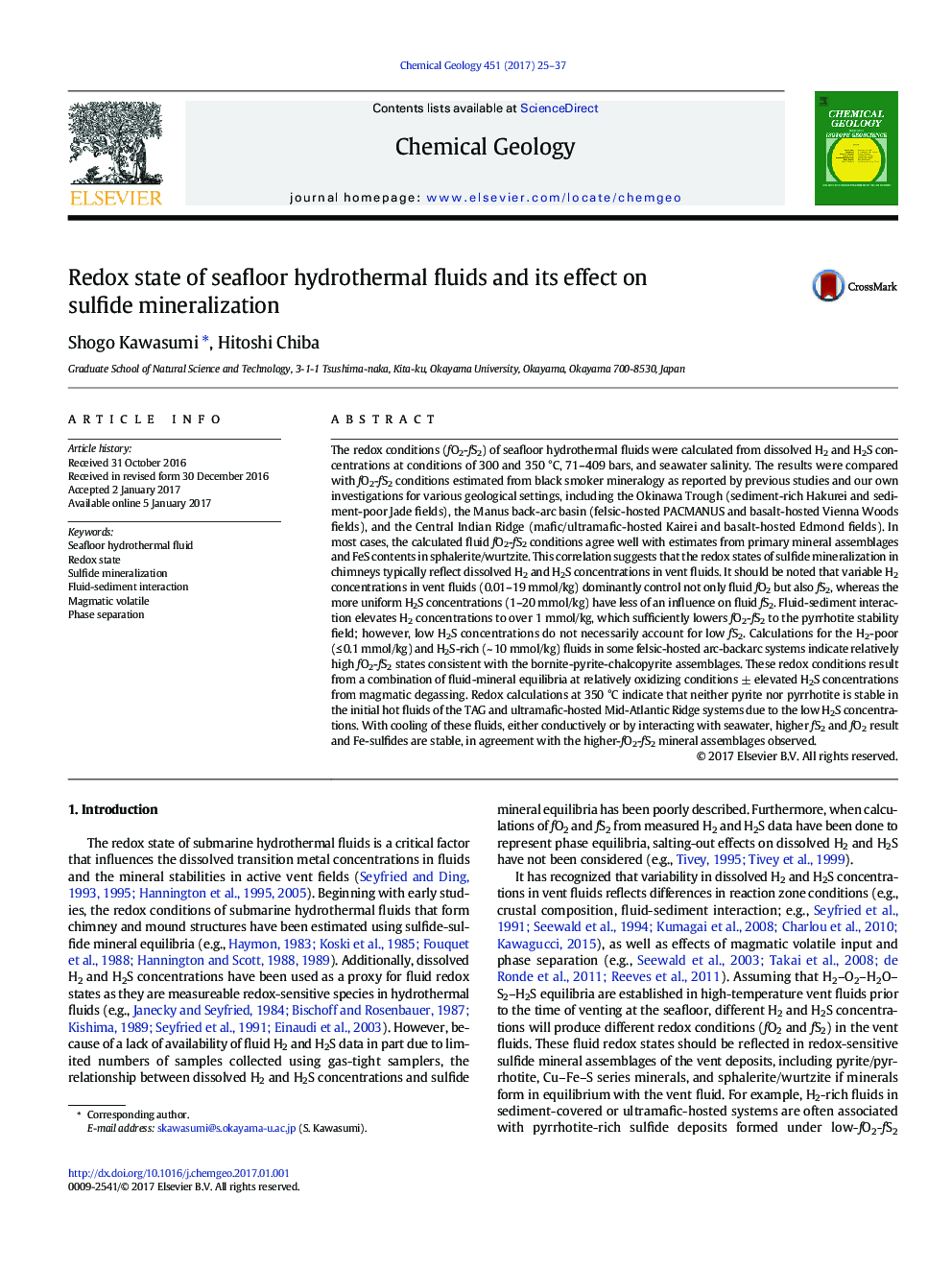| کد مقاله | کد نشریه | سال انتشار | مقاله انگلیسی | نسخه تمام متن |
|---|---|---|---|---|
| 5783039 | 1637523 | 2017 | 13 صفحه PDF | دانلود رایگان |

- The relationships between fluid H2-H2S composition and black smoker mineralogy were assessed.
- H2 concentrations in vent fluids dominantly control not only fO2 but also fS2.
- H2S concentrations in vent fluids have less of an influence on fS2.
- Chimney mineralogy in arc-backarc, sedimented, and the MOR systems provides a reasonable estimate of fluid redox state.
The redox conditions (fO2-fS2) of seafloor hydrothermal fluids were calculated from dissolved H2 and H2S concentrations at conditions of 300 and 350 °C, 71-409 bars, and seawater salinity. The results were compared with fO2-fS2 conditions estimated from black smoker mineralogy as reported by previous studies and our own investigations for various geological settings, including the Okinawa Trough (sediment-rich Hakurei and sediment-poor Jade fields), the Manus back-arc basin (felsic-hosted PACMANUS and basalt-hosted Vienna Woods fields), and the Central Indian Ridge (mafic/ultramafic-hosted Kairei and basalt-hosted Edmond fields). In most cases, the calculated fluid fO2-fS2 conditions agree well with estimates from primary mineral assemblages and FeS contents in sphalerite/wurtzite. This correlation suggests that the redox states of sulfide mineralization in chimneys typically reflect dissolved H2 and H2S concentrations in vent fluids. It should be noted that variable H2 concentrations in vent fluids (0.01-19 mmol/kg) dominantly control not only fluid fO2 but also fS2, whereas the more uniform H2S concentrations (1-20 mmol/kg) have less of an influence on fluid fS2. Fluid-sediment interaction elevates H2 concentrations to over 1 mmol/kg, which sufficiently lowers fO2-fS2 to the pyrrhotite stability field; however, low H2S concentrations do not necessarily account for low fS2. Calculations for the H2-poor (â¤Â 0.1 mmol/kg) and H2S-rich (~ 10 mmol/kg) fluids in some felsic-hosted arc-backarc systems indicate relatively high fO2-fS2 states consistent with the bornite-pyrite-chalcopyrite assemblages. These redox conditions result from a combination of fluid-mineral equilibria at relatively oxidizing conditions ± elevated H2S concentrations from magmatic degassing. Redox calculations at 350 °C indicate that neither pyrite nor pyrrhotite is stable in the initial hot fluids of the TAG and ultramafic-hosted Mid-Atlantic Ridge systems due to the low H2S concentrations. With cooling of these fluids, either conductively or by interacting with seawater, higher fS2 and fO2 result and Fe-sulfides are stable, in agreement with the higher-fO2-fS2 mineral assemblages observed.
Journal: Chemical Geology - Volume 451, 20 February 2017, Pages 25-37